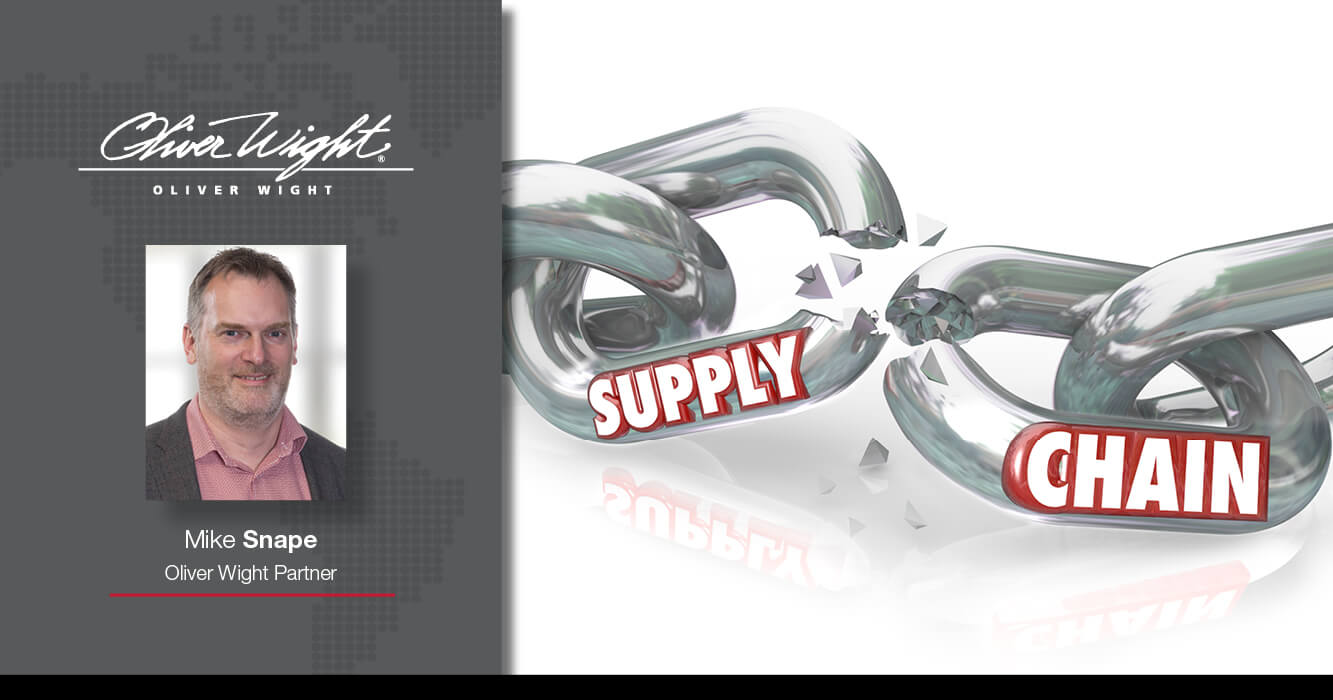Five supply chain problems you are likely to miss
26 Jan 2021
Blog

Having a robust closed-loop planning system with reliable processes and reporting structure quickly helps organisations to identify and solve supply chain issues which may not become visible until it is too late.
In this blog, I share five potential - yet common - problems which tend to go unnoticed and then present themselves like a massive pimple on your forehead hours before you are about to hit the town for a night out.
- Inventory creeping up on you. You haven’t noticed that actual demand isn’t matching what was planned, but production keep ploughing product into the distribution centre. The first you hear of the problem is either through a phone call at the end of the month asking you for an explanation as to why inventory is so high, or your distribution manager calling you up to say that they can’t fit anymore product into the warehouse.
- We’re out of stock. This is the message that comes from your account managers because the customer has been on the phone saying they haven’t received their goods. A quick check on the system and sure enough the item is out of stock even though you are sure you had that covered at the start of the week. What has gone wrong? After some (often time-consuming) investigation you find that the production plan issued wasn’t made, instead production switched to another product line because the raw materials required hadn’t turned in on time. A lack of communication all the way along the line.
- What bottleneck? Plans get issued, release of the orders into the factory get tracked, yet the product just does not seem to make it in time to the warehouse to meet your customer’s order. Having a production line that is both out of balance and measures which look at individual work centre utilisations can result in a consistent push of materials into the shop to keep equipment running. But the problem that is going unnoticed here is the two-month backlog of work-in-progress which has built up ahead of one of your constrained resources. Now you enter firefighting mode, digging out from the pile of work in progress the components you need to satisfy the current customer who is screaming at your customer service people for their deliveries.
- Plenty of inventory, lack of customer satisfaction. How can this be? Well, inventory profiling can report and track the movement of items and could, for example, show a huge chunk of inventory that is obsolete or slow-moving. This example can usually be explained by misaligned product introductions and phase-outs, promotions or just a constant drive to either a) keep the machines running or b) inflate the demand plan to ensure there is some stock there.
- Out of control costs and overtime through the roof are usually flagged up by the finance team at the month-end. This can come about as a consequence of various hidden issues. Overtime can become a culture especially if you are running high arrears and attempting to “burn them down”. But are you achieving this or are you just piling in more work ahead of that constrained resource? Have you checked your right-first-time measures, how much overtime and material wastage are a result of scrap product and re-makes? Have you suffered from poor service and tried to remedy this by increasing safety stock or lead-time, the consequence of this just brings forward demand rather than hit the actual demand attached to customer orders.
Many of these surprises can be avoided by having in place consistent and non-conflicting performance indicators which are there to monitor the performance of your processes. Using these indicators is similar to the warning lights on your dashboard, when the engine management light or the low oil light comes on for example, this tells us there is something wrong with the vehicle’s system and we investigate the cause. The same approach applies for the performance indicators used to monitor your manufacturing processes.
Of course, just having the performance indicators in place doesn’t mean that they will be reviewed, which is why you also need a regular cadence for reviewing execution of your plans, along with associated performance. Some examples of how this would work are.
- Every shift review schedule adherence, work centre utilisation, line stoppages and missed shop orders.
- Daily, review schedule adherence, missed shop orders, late deliveries from suppliers, customer service, significant demand variations.
- Weekly, review plan performance, supply performance, costs and inventory levels, quality performance, scrappage.
- Monthly, review plan performance, supplier performance, check for anticipated stock shortages based on extrapolated plans, inventory accuracy, data accuracy.
There are many more metrics you can measure beside these, but the main consideration is only measure what you are going to review and act on, do not measure for the sake of measuring. Looking for the failure points in your processes by using good measures and then fixing these is a sure-fire way to close the loop and reduce the number of surprises throughout your supply chain.
Author(s)
-
